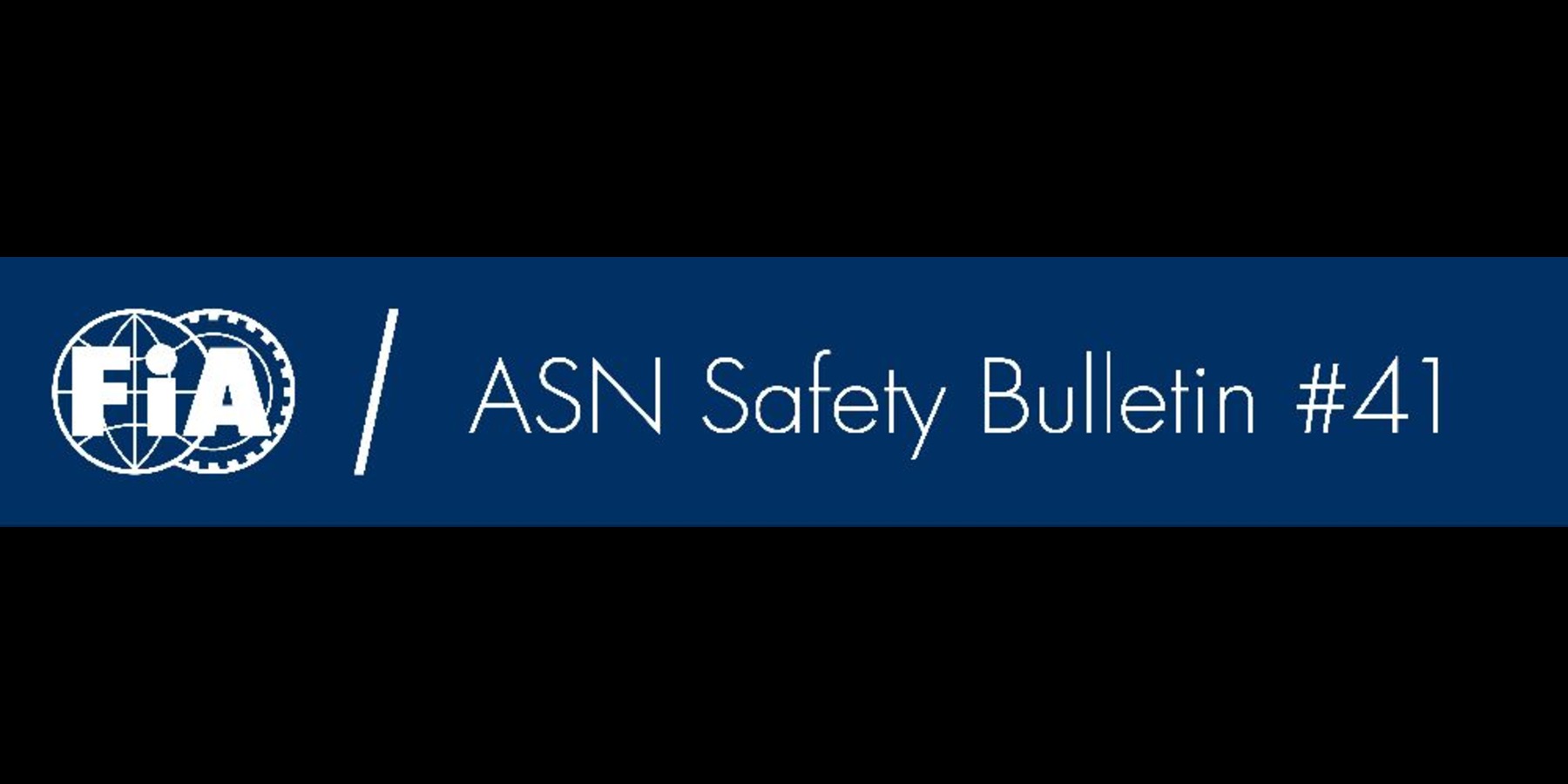ASN Safety Bulletin #41 Tyre barriers
04 Jun 2024 > Safety Bulletin
Dear ASNs,
The use of tyre barriers on motor racing circuits is an effective means of absorbing the energy of a vehicle in the event of a collision, but only when constructed according to the latest best practice guidance provided by the FIA and its Circuits Commission.
Circuits that have a valid FIA and/or ASN circuit licence must ensure that they respect the FIA and ASN regulations. Circuits with a valid FIA licence must also ensure that they respect the conditions of issue of the licence, and particularly that the circuit corresponds to the reference plan approved at the time of issuing the licence.
Tyre barriers have been shown to be an effective means of absorbing the energy of a vehicle in the event of a collision, significantly reducing the severity of the impact and therefore the risk of injury to the driver and damage to the vehicle. They should be installed wherever there is a risk of vehicles striking the first line of protection (guardrail or concrete wall) at an angle greater than 20 degrees. However, they should not be used where the normal trajectory of the vehicles is parallel or tangential to the barrier.
- Tyre barriers are normally constructed from touring car tyres of uniform diameter, stacked to form a homogeneous barrier of minimum height 1m, placed in front of and normally fixed to a permanent stopping barrier using appropriate load securing ratchet straps.
- Individual tyres should be secured to each other, horizontally and vertically, bolting being the preferred method, to form a 5 or 6 pack tyre barrier. These packs of tyres should then be fixed to each other to form a continuous barrier capable of dissipating energy in case of impact.
- Racing tyres and run flat tyres should not be used.
- The outer vertical face of the tyre barrier should be covered by a continuous, reinforced flexible sheet or belt. This has been shown to substantially improve the integrity and effectiveness of the tyre barrier system. Reinforced rubber industrial conveyor belting is ideal for this purpose.
- High-density polyethylene tube inserts may be recommended to enhance to integrity and energy dissipation properties of a tyre barrier. Such tubes are particularly effective in those tyre barriers which are likely to be subjected to impacts at large angles (greater than 30 degrees) relative to the face of the barrier. Information on suppliers is available from the FIA Safety Department.
- A flexible covering across the top of tyre barriers may be considered to facilitate workers’ access and drivers’ escape across the top of the tyre barrier in appropriate locations; to protect the top row of tyres from sunlight; and to prevent ingress of wildlife.
- In order to reduce the possibility of a low ride height single seater or prototype becoming submerged, where the terrain allows, the tyre barrier may be installed so as to be sunk into the surface of the run-off area to a depth equivalent to half of the width of the lowest tyre (around 10cm), subject to the tyre barrier extending to a minimum height of 1m above the ground surface.
- It is recommended to have spare packs of tyres held in stock for quick repairs between races.
- It is important to note that tyres may deteriorate over time necessitating replacement.
To apply for any FIA circuit licence please contact your local ASN [www.fia.com/members] who will forward your request to the FIA Safety Department.
Further information on circuit safety can be found at: www.fia.com/circuit-safety
Best regards,
FIA Safety Department
If you have any topics you would like us to cover in future bulletins please send your suggestions to the FIA Safety Department.
To read the other articles about the ASN Safety Bulletins, please visit the FIA website. You can also read by clicking here.





